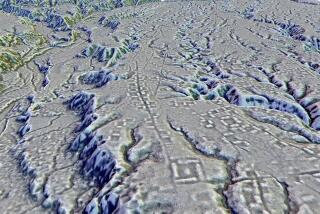Uruguay Site Shows Wider Spread of Early Farming
- Share via
The discovery of a 4,800-year-old farming community on the plains of Uruguay’s La Plata Basin indicates that agriculture was much more widely dispersed in the early history of South America than researchers had previously believed.
Inhabitants of the region were once thought to be only hunters and gatherers, but new findings by archeologist Jose Iriarte of the Smithsonian Tropical Research Institute in Panama and his colleagues indicate that a change in climate led to farming communities.
The people, known to archeologists as the Mound Builders, grew corn, squash and beans and constructed platform mounds surrounding a central plaza at a site called Los Ajos, Iriarte’s team wrote in the current issue of the journal Nature.
“This is a pretty unexplored area,” Iriarte said. “We didn’t know that these people had large villages and were practicing agriculture.”
The impetus for creating large villages was a drying of the climate about 5,000 years ago, which reduced natural resources and made small-scale farming more difficult. But the drying also exposed wetland areas in the region, uncovering fertile soil that could be readily tilled.
The Mound Builders apparently survived for nearly four millenniums before being enslaved by Spanish conquistadors.
More to Read
Sign up for Essential California
The most important California stories and recommendations in your inbox every morning.
You may occasionally receive promotional content from the Los Angeles Times.










